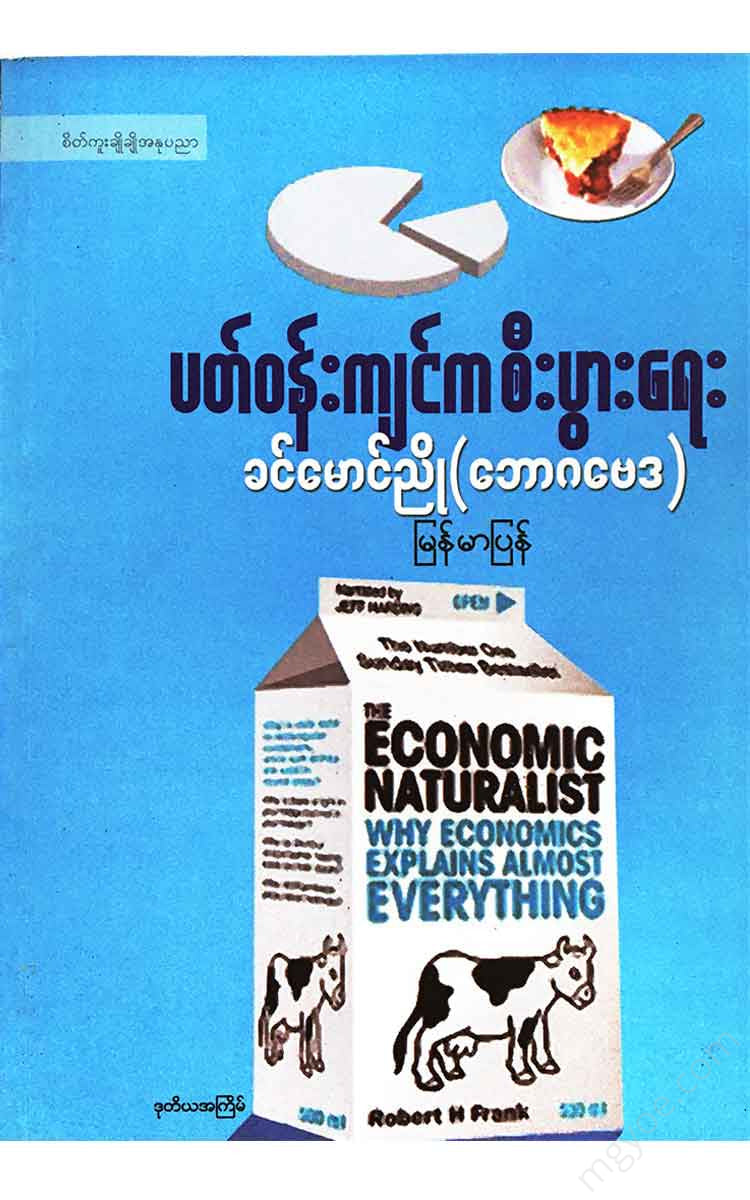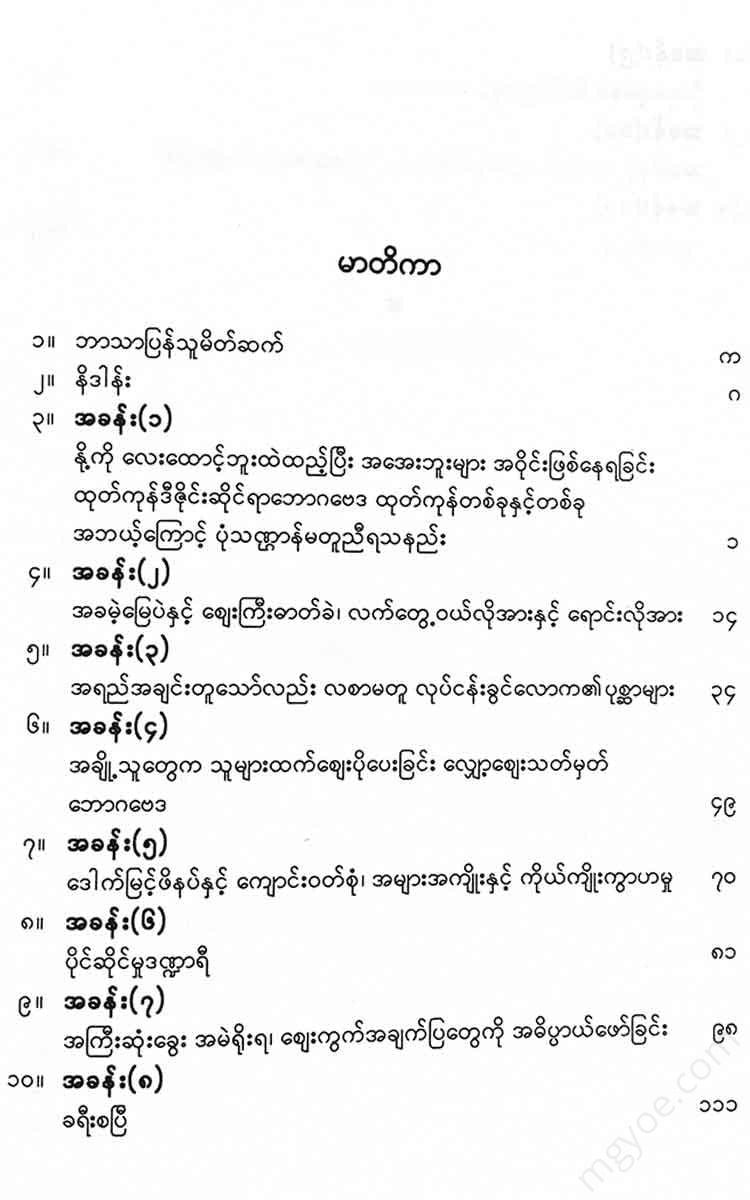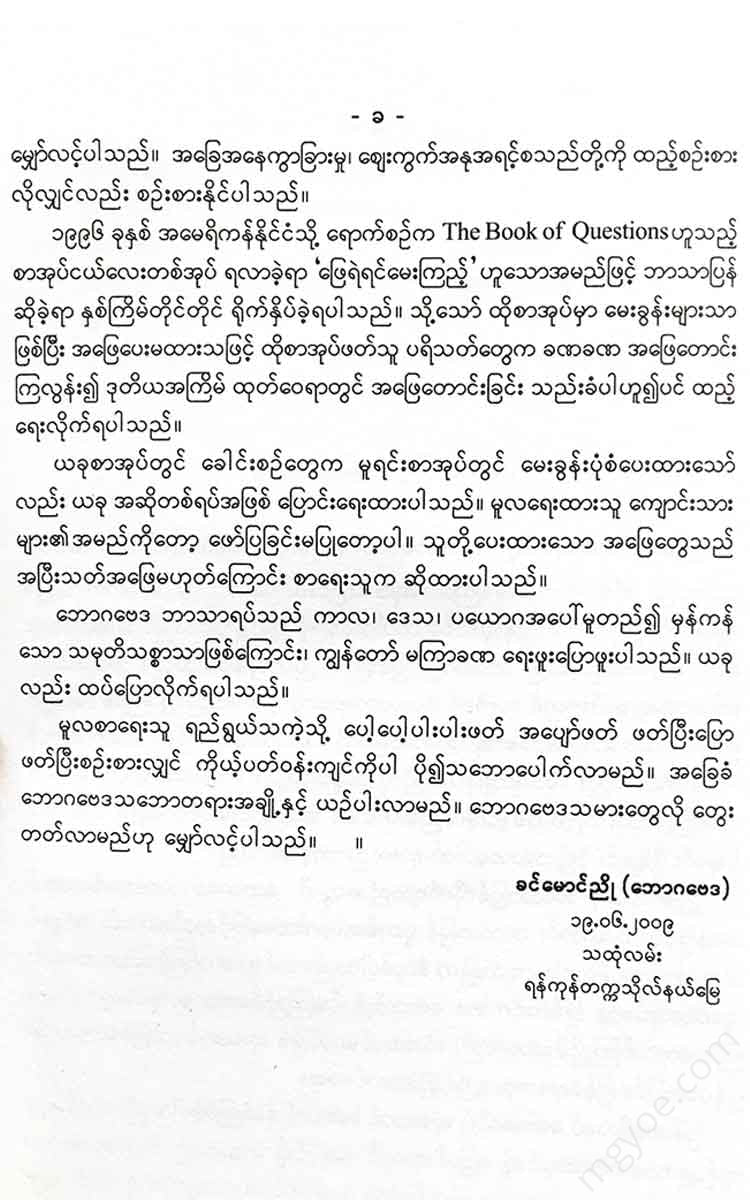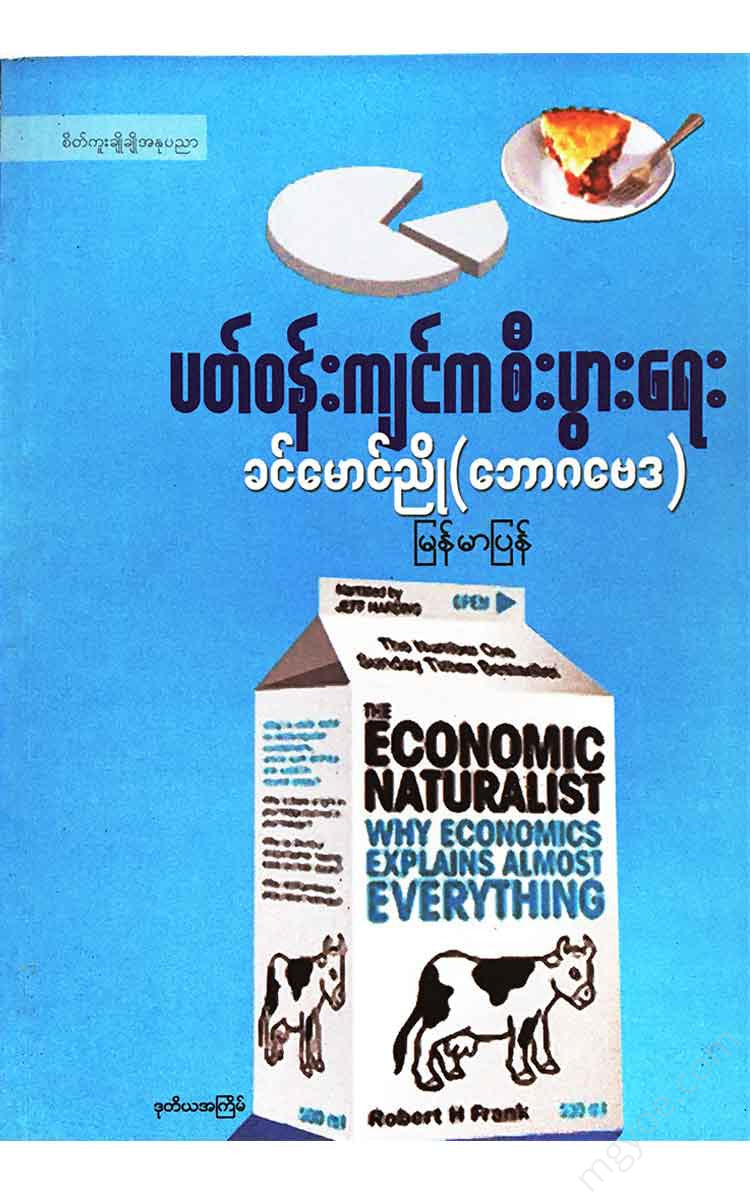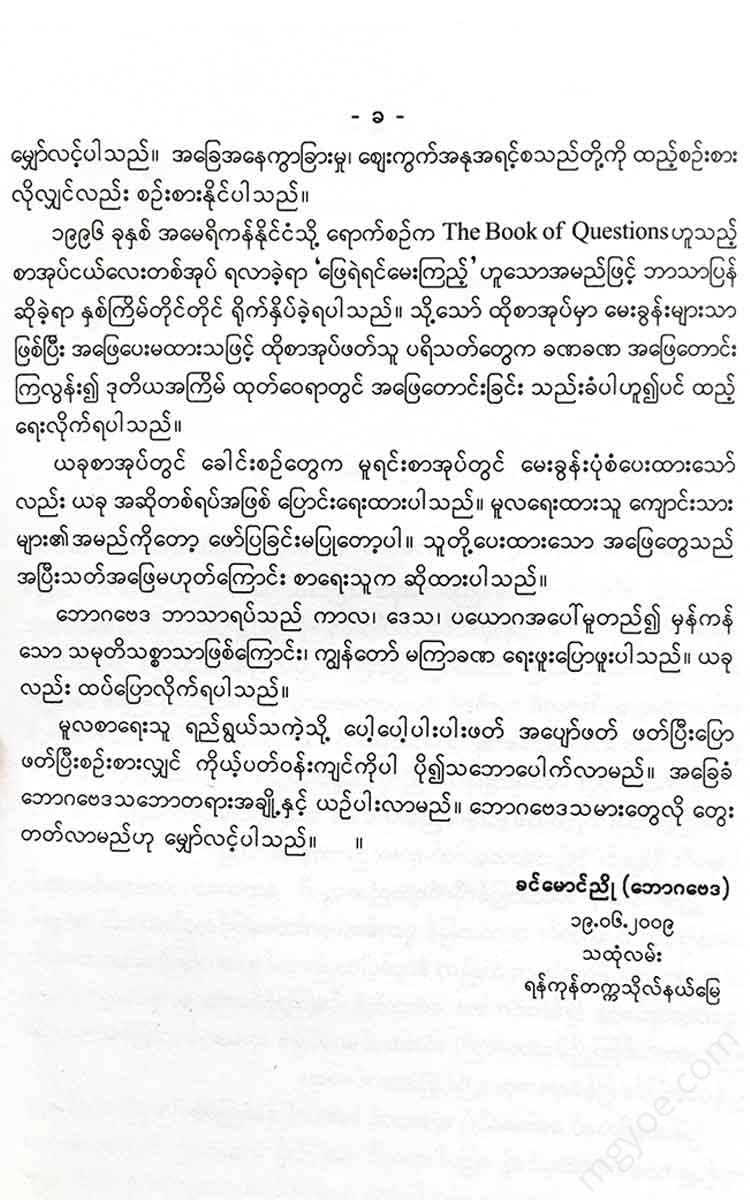စိတ်ကူးချိုချိုစာပေ
Khin Maung Nyo (Economics) - Environmental Economics
Khin Maung Nyo (Economics) - Environmental Economics
Couldn't load pickup availability
Introduction
Why do drive-thru cash machines have buttons for the blind? In fact, the drivers who use them are not blind. Just like walk-thru cash machines have buttons for the blind, they are also installed on drive-thru machines. It is not expensive to do both. If you do both, you will have to be very careful not to misplace them. The buttons for the blind do not cause any problems for the sighted.
Students are asked to write a homework assignment in an introductory economics class. They are asked to use a principle or principles taught in class to ask and answer interesting questions about a particular case that they are interested in. The length of the essay should not exceed 500 words. Some advanced essays are even shorter than 500 words. Do not use difficult or complicated words. Write it as if you were talking to a friend who has never studied economics. It is best to write it in a way that is understandable to people like you and does not involve algebra or graphs.
The best papers are often false and true. My favorite paper is Jennifer Jones’ 1997 book, “The Bride Who Never Wore a Wedding Dress and Rented a Cheap Groom’s Suit That She Could Wear Again.” Brides want to be fashionable. They want to look different, and they rent a suit in four or five different sizes and designs. They don’t buy a suit very often. They rent it once every four or five years. They charge a lot to cover the cost. It’s cheaper to buy a suit than to rent. Grooms are used to having a standard suit. There are suit rental companies for grooms. Two or three suits for a certain age are enough. You can rent a suit multiple times, so the rent is cheaper.
This book contains the most interesting examples I have collected over the years. It is intended for those who enjoy unraveling the complexities of everyday life.
Many people think that economics is difficult. They think that it is difficult to understand, but the basic principles are simple. They are things that everyone knows. You can see how the principles of economics work in examples and understand them without much effort. But that is not what is taught in colleges.
When I first started at Cornell, friends in different cities would send me cartoons mocking economists. In one cartoon, the presenter said, “He’s an economist. But he’s a really nice guy.”
Cartoons are also interesting information. If people laugh at cartoons, it must be telling something about the world. I remember reading cartoons and people seem to get disappointed when I tell them I'm an economist at events. I started to wonder why. In most people's minds, basic economics courses are associated with curves. Very few undergraduates ever take economics. Even fewer go on to get a doctorate. But it seems that basic economics is taught specifically to the few who do. And most students don't know anything. When you ask them about it six months after taking the course, they are no better than those who never took the course. So why are they spending so much money on courses that don't really help? They don't even seem to understand the principles of basic economics. It's good to hear and remember the term opportunity cost. The value of everything else that is not done because of doing a task is the opportunity cost.
Let's look at an example. You have a free ticket to see Eric Clapton perform tonight. The ticket cannot be resold. Bob Dylan is also performing that night. The ticket is worth £40. If you want to see this show, you can pay up to £50. If you pay more than £50, you won't have to go. There are no other costs to going to the show. What is the opportunity cost of going to Clapton's show?
If you go to see Clapton, you'll miss out on Bob Dylan. If you don't go to see Dylan, you'll miss out on a £50 concert. Tickets for Dylan don't cost £40. So the cost you'll miss out on is £10. If it costs £10 to see Clapton, you should go to Clapton. Otherwise, you should go to Dylan.
Opportunity cost is one of the two or three most important concepts in basic economics. Many students fail to grasp even this basic concept. Recently, economists Paul Ferraro and Taylor asked a group of students a question. The options were (a) 0 pounds, (b) 10 pounds, (c) 40 pounds, and (d) 50 pounds. The value of the sacrifice of not seeing Dylan was 10 pounds. When they asked 70 undergraduate economics students, only 7.4 percent of them answered correctly. Even if they had chosen only four answers at random, 25 percent of them would still get the answer right. This example shows how dangerous it is to know very little. When they asked 88 students who had never studied economics, 17.2 percent of them answered correctly. They answered twice as many questions as the economics students, but still far worse than if they had chosen randomly.
Why are economics students worse off? Maybe it's because the teacher doesn't own it. When I asked 199 economists, only 21.6% got it right. 25.6% answered zero. 6% answered £40 and 27.6% answered £50.
When two economists studied leading textbooks, they found that many of them did not give opportunity cost the attention it deserved. They did not delve into the subject beyond the basic level. They did not even include opportunity cost in the index at the back of the textbooks.
However, opportunity cost can explain a number of interesting behaviors. For example, it can explain the cultural gap between a big city like London and a small town in the north of England. Why are people in Paddington so rude and impatient? Why are people in Preston so polite and friendly? In Preston, people help you if you don't know your way around. In Paddington, you don't even look at each other. In London, wages are high and there is so much to do, so the opportunity cost of people's time is very high. Londoners are quick to show that they are impatient.
It is about asking students to look at questions that they can answer at a basic level in biology and ask similar questions. If you know about the theory of gradual change, you will be able to understand everything you have noticed before. It reveals things to be aware of in the world. (For example, why are males larger than females? Bull Elephant Seals are over 20 feet long, weigh 2,700 kilograms, and weigh as much as a large car, while females weigh only 360 to 550 kilograms. This is also true for other animals. Many of these animals have a habit of taking more than one female. Males compete with each other to get the females. Males fight each other for hours on the beach, until one of them bleeds and loses, and the match is over. The winning male seal can take up to 100 female seals. That is why male seals are so large. Seals with large genes survive and increase in number. Since young seals cannot mate, male seals become large seals.
The same can be said about peacock tails. Female peacocks prefer long-tailed males. Long tails in peacocks are a sign of health. A male peacock with a diseased tail will not have a beautiful, long tail.
However, there are some things that are good for the individual but bad for the group. A 2,700-kilogram seal cannot easily escape a great white shark. If seals lose half their weight, they will be more comfortable. They are not different in fighting each other, but they will be more able to escape the great white shark. Similarly, if a male peacock's tail is reduced by half, it will attract other female peacocks, but it will be less likely to be chased by other animals. However, the seals do not lose weight, and the male peacocks still have long tails.
It is not that there is no end to the arms race. Sometimes, the harms outweigh the benefits of being bigger or having a longer tail. The balance of costs and benefits can be seen in the surviving males. In animals that mate individually, the males and females are not much different in size. In animals that mate with more than one, the males are larger.
In animals that mate only with one another, there is no difference in size between males and females.
In biology, such things are easy to remember and easy to explain to others. If you can explain and understand them, you will understand much more than just remembering. The same is true in economics.
Introductory economics cannot be said to be like that. Students only have equations and curves in their minds. Mathematics is an important resource for the advancement of economics, but it is not an effective way to introduce new people to it. Unlike a group of people who have studied mathematics from an early age, such as engineers and other subjects, those who study economics through equations and curves do not acquire the unique thinking of economists. In their efforts to understand the mathematics, they miss the economic ideas behind the mathematical equations.
